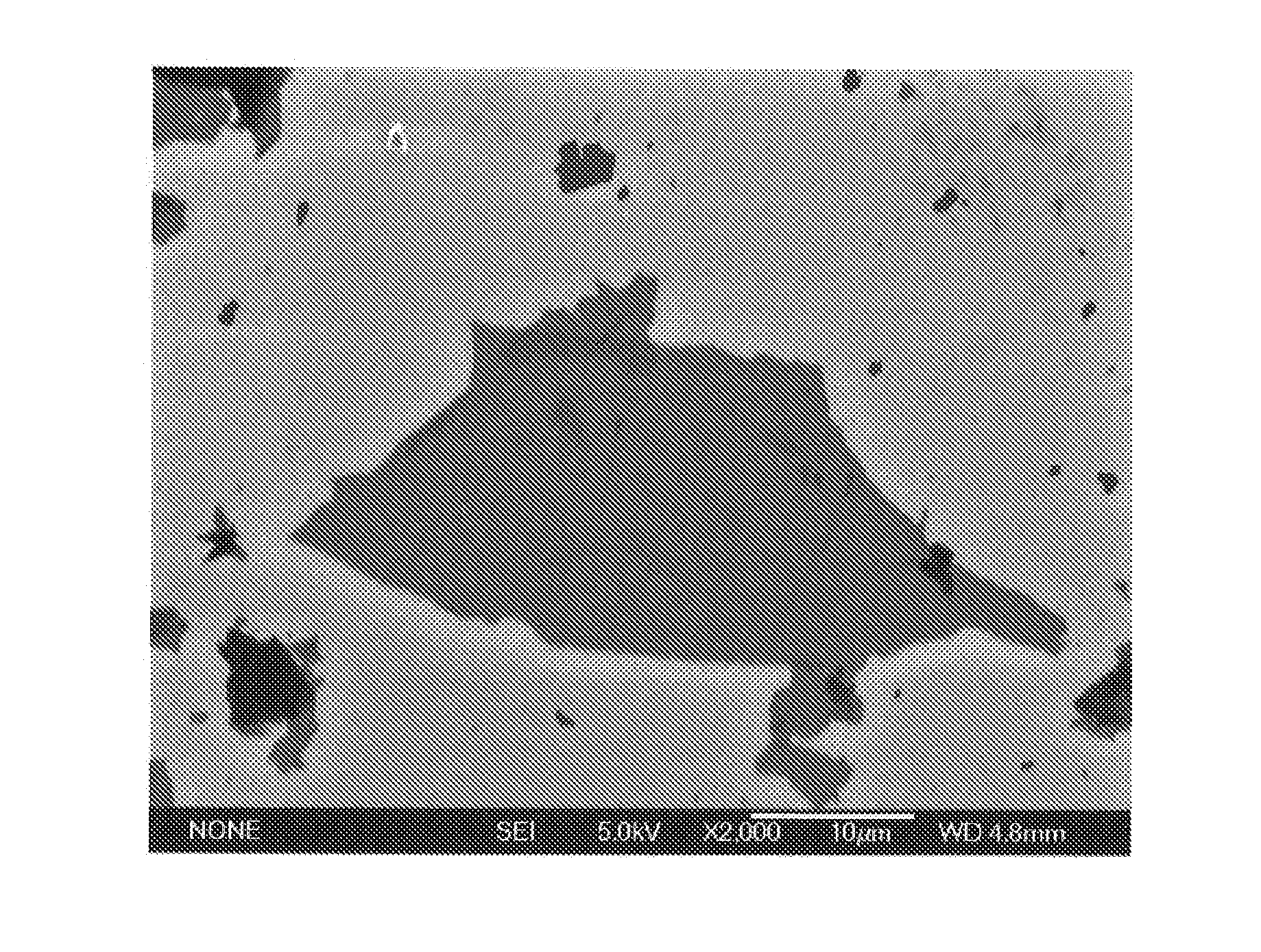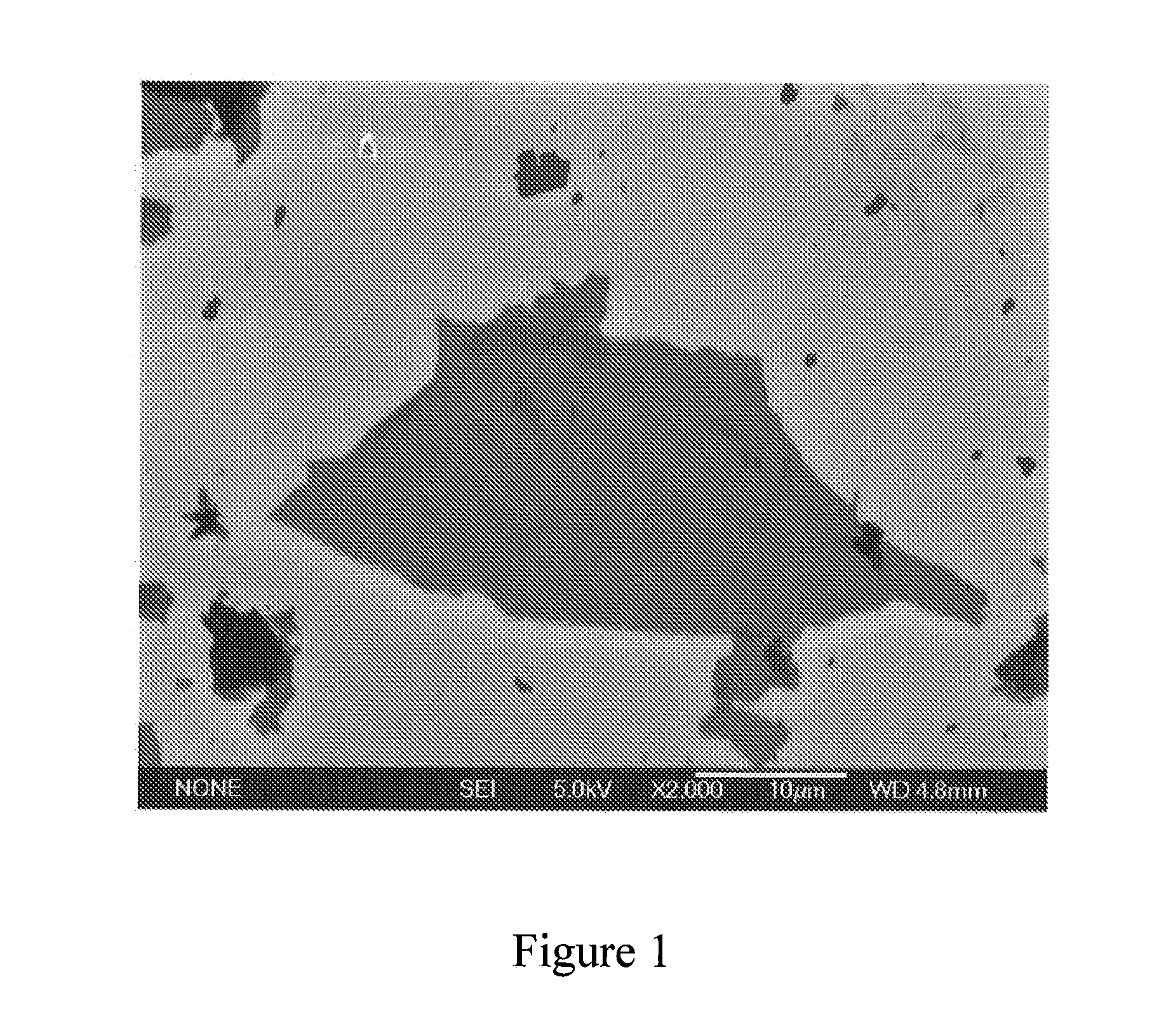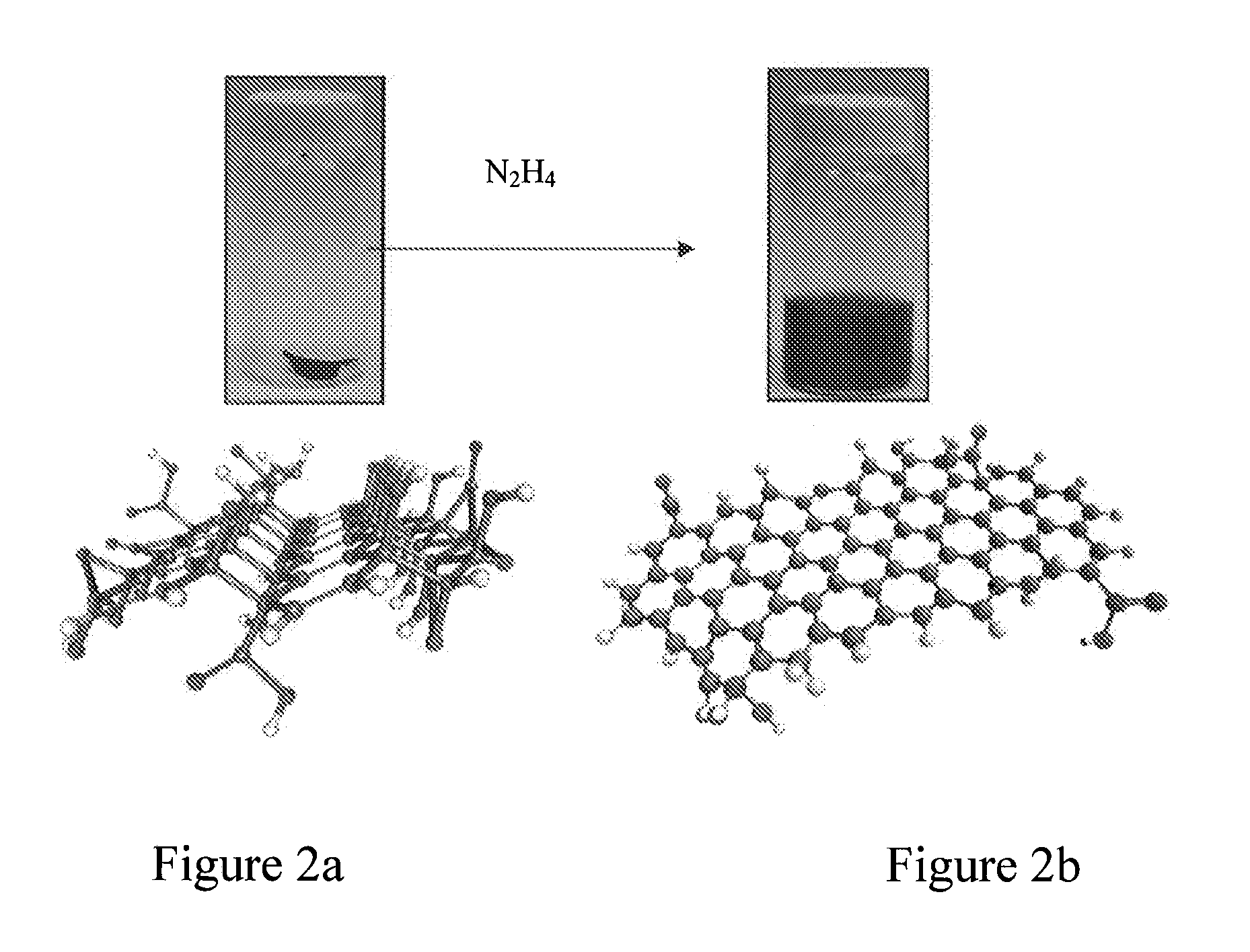High-throughput solution processing of large scale graphene and device applications
a graphene and solution technology, applied in the direction of single-layer graphene, cell components, conductors, etc., can solve the problems of difficult isolating single-sheet graphene, less experimental results, and neither is well suited for industrial applications
- Summary
- Abstract
- Description
- Claims
- Application Information
AI Technical Summary
Problems solved by technology
Method used
Image
Examples
Embodiment Construction
[0033]Some embodiments of the current invention are discussed in detail below. In describing embodiments, specific terminology is employed for the sake of clarity. However, the invention is not intended to be limited to the specific terminology so selected. A person skilled in the relevant art will recognize that other equivalent components can be employed and other methods developed without departing from the broad concepts of the current invention. All references cited herein are incorporated by reference as if each had been individually incorporated.
[0034]According to some embodiments of the current invention we present a fundamentally new approach for producing large-scale single layer and few layer graphene (FIG. 1) through a scalable solution process. According to an embodiment of the current invention, graphite oxide (GO) paper is dispersed in substantially pure hydrazine to create stable dispersions of hydrazinium graphene (HG) through the formation of counterions. However, ...
PUM
| Property | Measurement | Unit |
|---|---|---|
| temperatures | aaaaa | aaaaa |
| step heights | aaaaa | aaaaa |
| step height | aaaaa | aaaaa |
Abstract
Description
Claims
Application Information
 Login to View More
Login to View More - R&D
- Intellectual Property
- Life Sciences
- Materials
- Tech Scout
- Unparalleled Data Quality
- Higher Quality Content
- 60% Fewer Hallucinations
Browse by: Latest US Patents, China's latest patents, Technical Efficacy Thesaurus, Application Domain, Technology Topic, Popular Technical Reports.
© 2025 PatSnap. All rights reserved.Legal|Privacy policy|Modern Slavery Act Transparency Statement|Sitemap|About US| Contact US: help@patsnap.com



